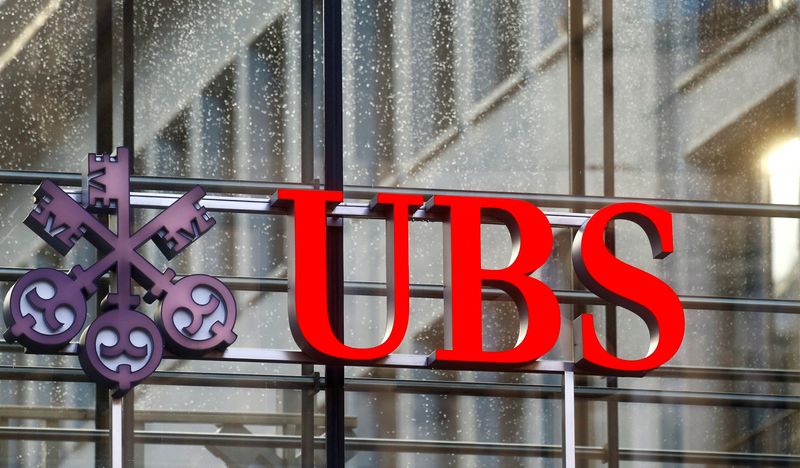By Noele Illien
ZURICH (Reuters) -UBS said on Tuesday it would restart share buybacks and find $3 billion more in cost savings from integrating Credit Suisse, as the bank signalled a tougher next phase for absorbing its rival after underwhelming fourth-quarter results.
Shares in the bank dropped as much as 4%, with analysts pointing to slightly lower-than-expected profitability targets as revenue at the lender falls before the cost savings are achieved.
UBS's shotgun takeover of Credit Suisse last March was the first-ever merger of two global systemically important banks, and UBS has since managed to avoid any major ructions, with its share price jumping some 50%.
The bank declared the first phase of the integration complete on Tuesday, but there remains a long way to go, with trickier stages still to come including thousands of job losses and the combining of different IT systems. UBS CEO Sergio Ermotti said progress over the next three years would not be "measured in a straight line".
"There is a significant amount of restructuring and optimisation that must take place over the next 3 years before we can harvest the full benefits of the combination," he said.
UBS said it now expected $13 billion in cost savings by the end of 2026 - with half of it to come from slashing headcount, UBS Chief Financial Officer Todd Tuckner said. UBS had previously set a goal of more than $10 billion.
Shares in the world's biggest wealth manager were down 3.1% by 1325 GMT, against a 0.9% rise in the STOXX Europe 600 banks index.
Analysts at Citi said that, having already achieved 30% of the cost savings by end-2023, UBS would only have achieved 45% by end-2024 and 75% by end-2025, whereas falls in revenue would hit earlier.
"This points to downside risk to near-term consensus earnings and has led some investors to query the reliability of the long-term targets, as there is now expected to be more of a hockey stick trajectory than was previously thought to be the case," they wrote.
NEW WEALTH MANAGEMENT TARGETS
UBS affirmed key financial targets and set new ones, including an ambition for its huge wealth management arm to boost invested assets to $5 trillion by 2028 from $3.85 trillion currently.
It proposed a 27% increase in its 2023 dividend and the restart of buybacks beginning with up to $1 billion this year.
European banks have been shelling out record sums to shareholders, making UBS, which suspended its buyback programme after the Credit Suisse acquisition, an outlier.
"Our ambition is for share repurchases to exceed our pre-acquisition levels by 2026," the bank said.
RBC analyst Anke Reingen said that while revenue was in line with expectations, the Q4 results "disappointed on costs", although higher savings targets reassure that the bank can keep costs under control.
The cost of absorbing Credit Suisse led UBS to post a net loss of $279 million in the fourth quarter, slightly smaller than a company-compiled consensus estimate for a $285 million loss.
The bank's global wealth management arm saw net new money of $22 billion in the fourth-quarter, although a change in the metric UBS uses made it difficult to compare with previous quarters.
INVESTMENT BANK LOSS
UBS's investment bank reported a pretax loss of $169 million but is expected to return to profitability in the first quarter "due to improving market activity, a growing banking pipeline and advanced progress on the integration."
The bank also expects net interest income for personal and corporate banking and global wealth management to be roughly flat in the first quarter, helping boost net profit in the period.
UBS still has to combine legal entities as it absorbs Credit Suisse, and is set to begin migrating Credit Suisse clients.

Concerns abound about the potential for friction with regulators worried about risks to the Swiss economy should the bank get into trouble. UBS's balance sheet is now more than $1.6 trillion, nearly twice the size of Switzerland's economy.
UBS has said the focus on its balance sheet is misleading, adding that it holds around 20% of total assets in highly liquid assets and another 15% in low-risk mortgages to retail and wealthy clients.